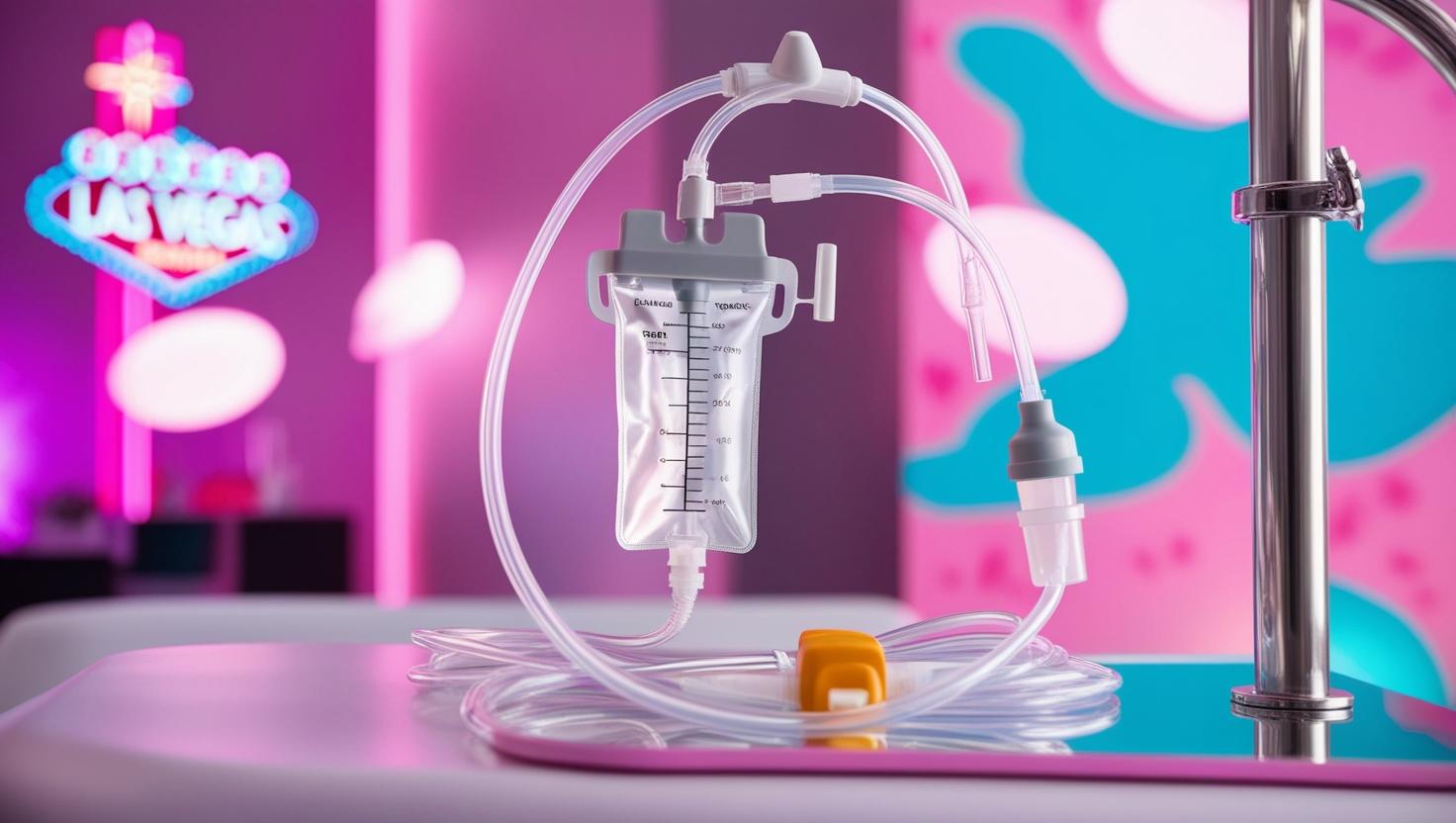PRP hair loss treatments are gaining popularity for their potential to stimulate hair growth using your own blood’s platelets. If you’re curious about how these treatments work and their effectiveness, this article covers everything you need to know.
Key Takeaways
- Platelet-Rich Plasma (PRP) therapy uses the patient’s own blood to stimulate hair follicle growth and is effective for treating various types of hair loss, including androgenetic alopecia and alopecia areata.
- The PRP treatment process involves three main steps: blood draw, centrifugation to isolate platelet-rich plasma, and direct injections into the scalp to promote hair regrowth, with minimal downtime and natural-looking results.
- Ideal candidates for PRP therapy are healthy individuals with thinning hair or early-stage hair loss, but those with blood disorders, autoimmune conditions, or who are on blood thinners should avoid this treatment.
Understanding PRP Hair Loss Treatments
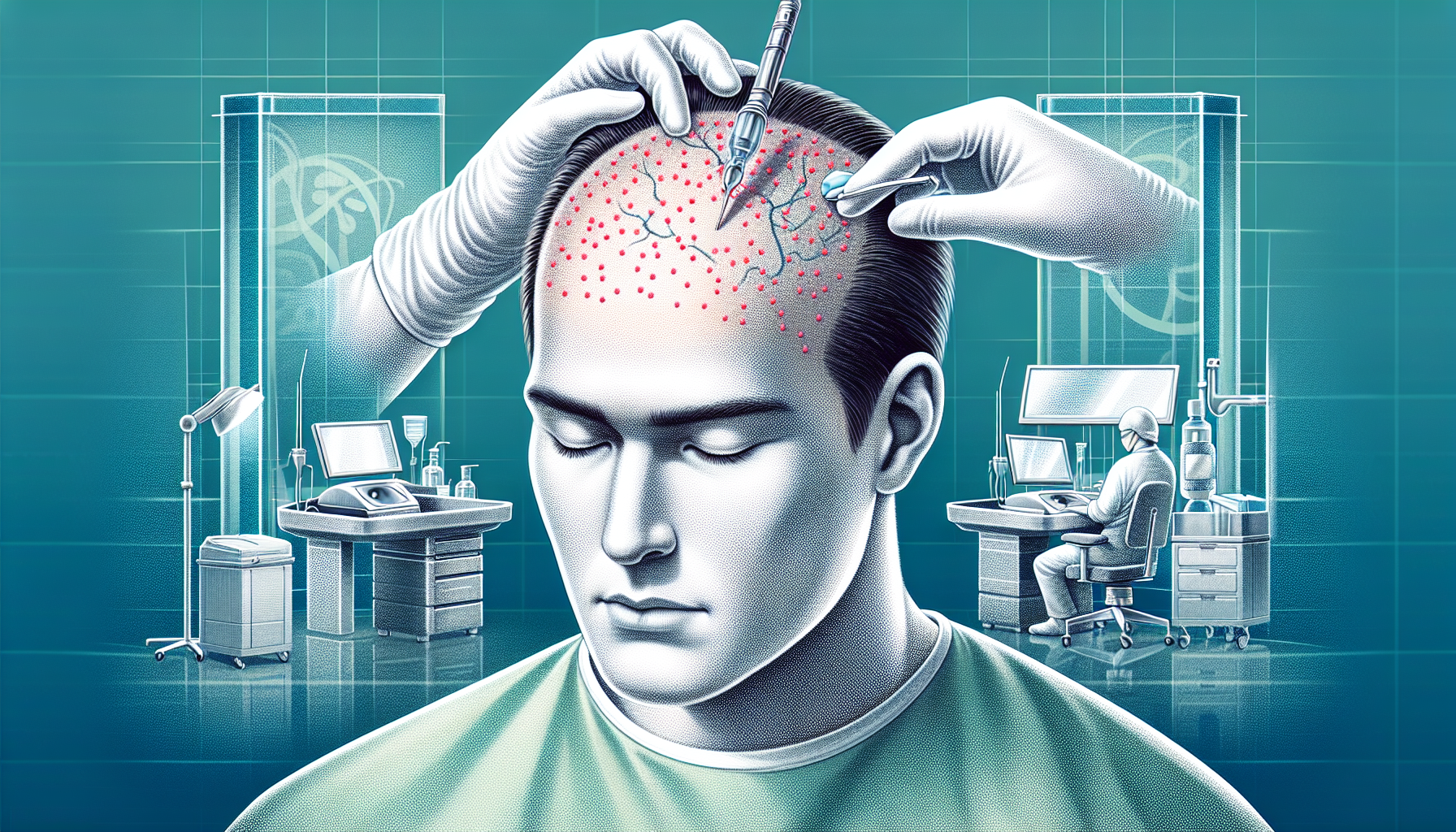
Platelet-Rich Plasma (PRP) therapy, also known as platelet rich plasma therapy, is a revolutionary hair restoration treatment. It uses the body’s natural regenerative abilities to fight hair loss and stimulate new growth. PRP has been used in various medical applications since the 1980s, initially for treating thrombocytopenia, but its potential for hair restoration has only recently been recognized and developed.
PRP therapy centers on the use of the patient’s blood plasma, which is rich in platelets and growth factors, providing a concentrated dose of these essential elements for tissue regeneration and healing. In the context of hair loss, PRP awakens dormant hair follicles, prompting them to transition into an active growth phase. This treatment has shown promise for various types of hair loss, including androgenetic alopecia (male and female pattern baldness), alopecia areata, and even some forms of scarring alopecia.
How PRP Works
The process of PRP therapy for hair loss is a marvel of modern medical science, utilizing the body’s own healing mechanisms to stimulate hair regrowth. It involves a three-step process that begins with a simple blood draw from the patient. This small amount of blood, typically around 30 cc, is then processed using a centrifuge to separate the platelet-rich plasma from other blood components.
Once the platelet-rich plasma is isolated, it’s injected directly into the scalp at the level of the hair follicles using platelet rich plasma injections. These injections are strategically placed in areas where hair thinning or loss is most prominent. The concentrated platelets in the plasma contain growth factors that, when introduced to the scalp, stimulate the activity of the hair follicles. This process helps to prolong the growth phase of the hair cycle and encourages the production of stronger, thicker hair strands.
The beauty of PRP lies in its ability to work with the body’s natural processes, providing a boost to the hair follicles without the need for synthetic compounds or invasive surgical procedures.
Benefits of PRP for Hair Loss
PRP hair loss treatments bring a range of unique benefits, making them an appealing choice for many individuals grappling with hair thinning or loss. One of the most significant advantages is the minimal downtime required after the procedure. Unlike more invasive hair restoration methods, patients can typically resume their normal activities shortly after receiving PRP injections. This makes it an ideal choice for those with busy lifestyles who can’t afford extended recovery periods.
Another key benefit of PRP therapy is its ability to produce natural-looking results. Since the treatment works by stimulating the body’s own hair growth processes, the resulting hair growth aligns perfectly with the patient’s existing hair patterns. This ensures a seamless and authentic appearance, avoiding the artificial look that can sometimes occur with other hair restoration techniques.
Moreover, PRP treatments are suitable for both men and women, making them a versatile solution for addressing hair loss across genders. Whether you’re dealing with male pattern baldness or female pattern hair loss, PRP can be tailored to your specific needs, offering a personalized approach to hair restoration.
The PRP Treatment Process
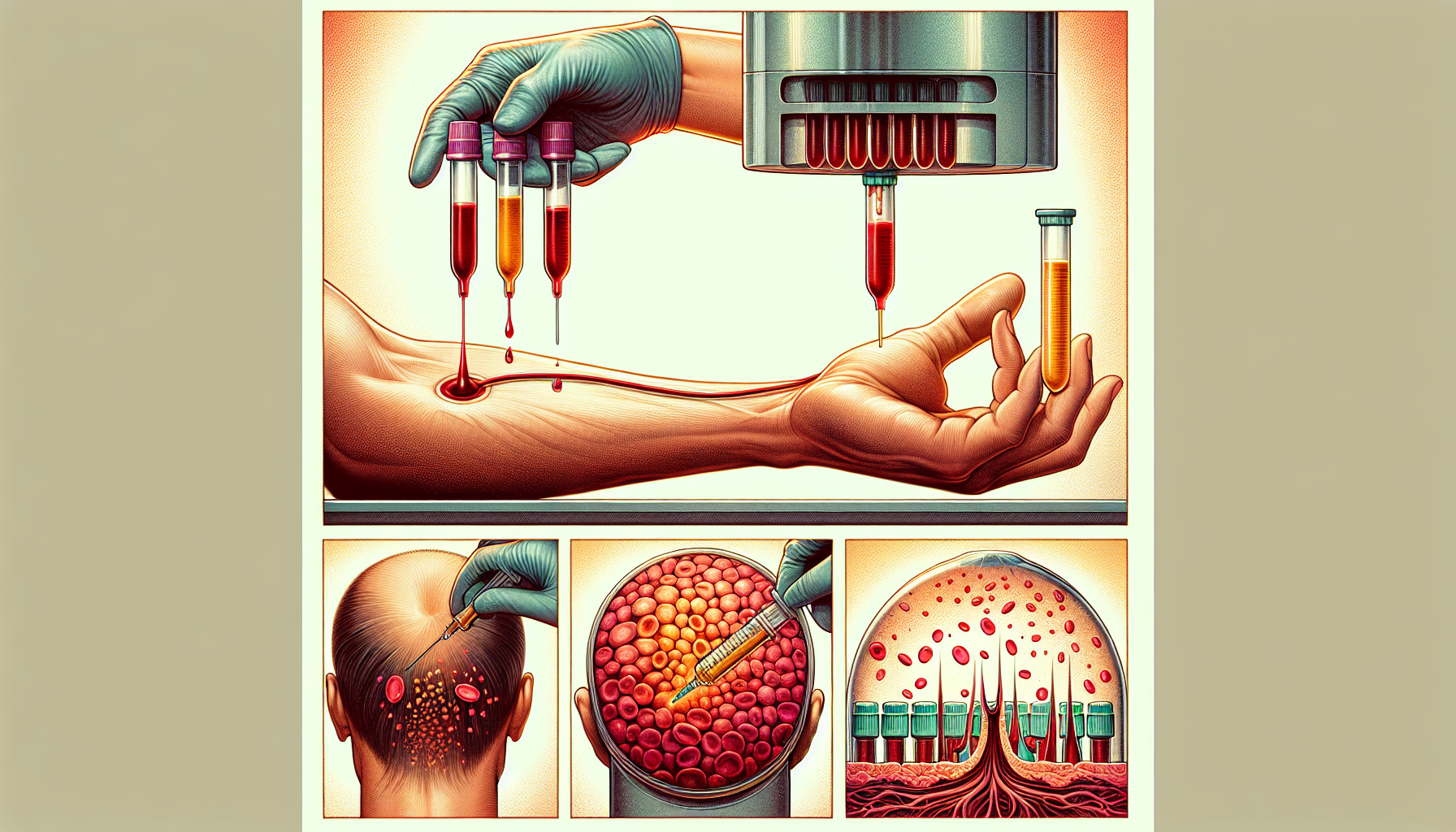
The PRP treatment process is a meticulously planned procedure, designed to optimize the potential for hair regrowth. It consists of three main steps: blood draw, centrifugation, and injection. Each stage is crucial to the overall success of the treatment and is performed with precision to ensure the best possible outcomes.
Examining each step of this innovative process helps us understand how PRP therapy transforms a small sample of your blood into a potent hair restoration solution.
Blood Draw and Preparation
The journey to hair restoration with PRP begins with a simple blood draw. A small amount of blood, typically around 30 cc, is taken from the patient’s arm. This process is similar to a standard blood test and is generally well-tolerated by most individuals. To prevent clotting during processing, an anticoagulant such as citrate dextrose is added to the blood sample. This step is crucial in ensuring that the platelets remain viable and effective for the treatment.
Once the blood is collected, it’s immediately placed into a centrifuge. This specialized machine rapidly spins the blood sample, separating it into distinct layers based on density. The centrifugation process effectively isolates the platelet-rich plasma from other blood components such as red blood cells. It’s worth noting that the FDA recommends that platelet-rich plasma be separated and administered within four hours of being collected to maintain its potency. This time-sensitive nature of PRP preparation underscores the importance of receiving treatment from a qualified provider with the proper equipment and expertise to handle the process efficiently.
Injection Process
With the platelet-rich plasma prepared, the next step is the injection process. Typically, a local anesthetic is applied to the scalp before the procedure starts. This helps minimize any discomfort experienced during the process.
The concentrated PRP is then carefully injected into the scalp using a fine needle. These injections are strategically administered at the level of the hair follicles, focusing on areas where hair thinning or loss is most prominent. The precision of this process is crucial, as it ensures that the growth factors in the PRP are delivered directly to the areas where they’re needed most.
Patients may feel a slight pressure or pinching sensation during the injections, but the procedure is generally well-tolerated thanks to the anesthetic. This targeted approach allows the PRP to work directly on stimulating dormant hair follicles and promoting new hair growth.
Post-Treatment Care
After the PRP injections, appropriate aftercare is crucial for maximizing benefits and reducing potential side effects. One of the most important instructions is to avoid washing your hair for at least 24 hours following the procedure. This allows the PRP to remain undisturbed at the injection sites, giving it time to work its magic on the hair follicles. Additionally, patients are advised to refrain from coloring or chemically treating their hair for at least 72 hours post-treatment to prevent any scalp irritation that could interfere with the healing process.
While recovery is generally quick, some patients may experience mild discomfort or swelling in the treated areas. To ease any discomfort, applying an ice compress to the affected areas of the scalp can be beneficial. It can help reduce pain and swelling. Most people can resume their regular activities immediately following the injection, but it’s important to listen to your body and avoid strenuous exercise for a day or two if needed.
To achieve optimal results, a series of treatments is typically recommended. Most patients require three to four PRP sessions spaced four to six weeks apart to see full results. After the initial treatment regimen, maintenance sessions every four to six months are often suggested to prolong the effects. It’s also worth noting that combining PRP therapy with other hair loss treatments, such as minoxidil or finasteride, can potentially enhance results and boost the hair growth cycle.
Who Can Benefit from PRP Hair Loss Treatments?
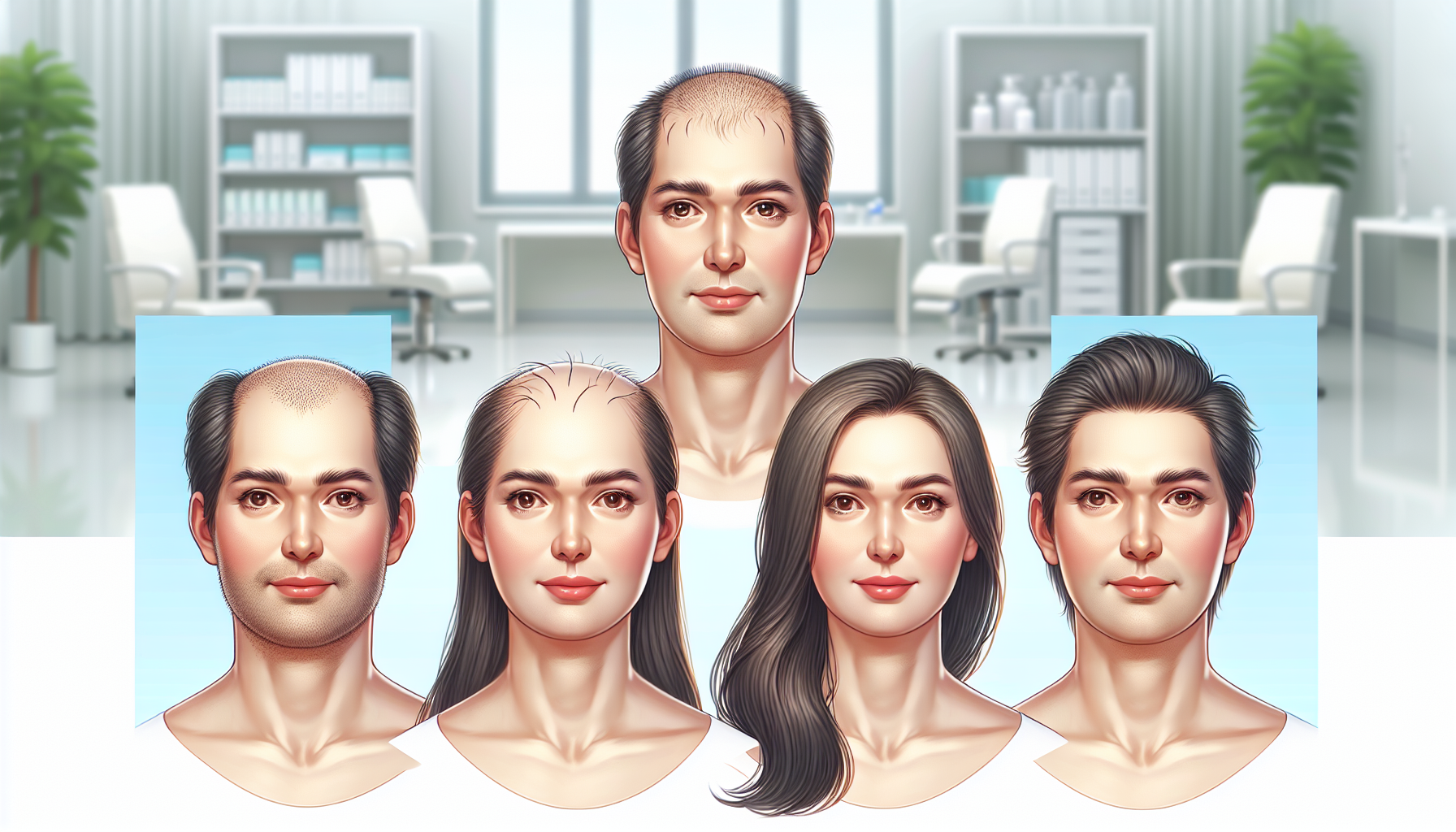
PRP hair loss treatments have become a versatile solution for a broad spectrum of individuals dealing with hair thinning and loss. This innovative therapy is not limited to a specific age group or gender, making it an attractive option for many. Healthy men and women experiencing various forms of hair loss are typically ideal candidates for PRP hair restoration therapy.
Whether you’re dealing with the early stages of hair thinning or more advanced hair loss, PRP treatments can potentially offer significant benefits. The therapy has shown particular promise in treating androgenic alopecia, the most common form of pattern baldness affecting both men and women. However, the suitability of PRP therapy can vary depending on individual factors, and it’s essential to consult with a qualified healthcare provider to determine if this treatment is right for you.
Suitable Candidates
Generally, the ideal candidates for PRP hair loss treatments are healthy individuals experiencing thinning hair or in the early stages of hair loss. These treatments can be particularly effective for those who have areas of ‘weak quality’ hair growth on their scalp, where functioning hair follicles are still present but not performing optimally. PRP therapy works by rejuvenating these existing follicles, making it most effective when there’s still hair to work with, even if it’s thinning.
PRP treatments have shown promising results in various hair loss conditions. For instance, individuals with androgenic alopecia, also known as male or female pattern baldness, often respond well to PRP therapy. Clinical studies have demonstrated significant hair regrowth in patients with this common form of hair loss. Additionally, PRP can be beneficial for those with small areas of alopecia areata, an autoimmune condition that causes patchy hair loss.
It’s important to note that while PRP can be effective for many people, candidates should have realistic expectations about the outcomes. The treatment works best when combined with a comprehensive hair care regimen and, in some cases, other hair loss treatments recommended by a healthcare provider.
Contraindications
While PRP hair loss treatments prove beneficial for many, certain contraindications may render this therapy unsuitable or potentially risky for some individuals. It’s crucial to understand these contraindications to ensure the safety and effectiveness of the treatment.
Individuals with blood disorders, such as those with:
- blood cancer
- Hepatitis C
- HIV
- AIDS
should avoid PRP treatments. These conditions can affect the quality and function of platelets, potentially compromising the effectiveness of the therapy or posing health risks.
Additionally, people with autoimmune conditions are generally not good candidates for PRP therapy. The immune system’s response to the treatment could be unpredictable in these cases. Those taking blood thinners or immunosuppressive medications should also exercise caution, as these drugs can interfere with the platelet function or healing process.
Other relative contraindications for PRP treatment include:
- Recent use of NSAIDs
- Recent glucocorticoid injections at the treatment site
- Systemic glucocorticoid use
- Recent illness or fever
- Cancer
- Anemia
- Thrombocytopenia
- Tobacco use
It’s essential to have a thorough consultation with a qualified healthcare provider to discuss your medical history and determine if PRP treatment is safe and appropriate for you.
Expected Results and Timeline

When starting a journey with PRP hair loss treatment, one naturally wonders about the expected results and timeline. While individual experiences may vary, there’s a general pattern to the progression of results that most patients can anticipate. Initially, many patients notice subtle improvements in hair texture and thickness, often observing that their existing hair becomes stronger and less prone to breakage. These early changes can be encouraging signs that the treatment is taking effect.
However, it’s important to understand that significant, visible results typically take time to develop. New hair growth and more noticeable thickening usually become apparent within 3 to 6 months after the initial treatments. This timeline aligns with the natural hair growth cycle, as PRP works to stimulate dormant follicles and enhance the growth phase of existing hair.
Initial Results
The journey to fuller, healthier hair with PRP treatment begins with subtle yet encouraging changes. Right after the first few PRP sessions, patients often report improvements in hair texture. This initial change is a positive sign that the treatment is starting to take effect at the follicular level.
About two weeks following the initial treatment, many patients begin to observe new hair growth and improved texture in their existing hair. These early signs of progress can be incredibly motivating for those who have been struggling with hair loss.
As the treatment progresses, patients typically notice a reduction in hair breakage. This is a crucial development, as it allows existing hair to grow longer and appear fuller. Additionally, many individuals report that their hair strands feel thicker shortly after their first PRP session. While these initial results may seem modest, they lay the foundation for more significant improvements to come.
It’s important to remember that hair growth is a gradual process, and patience is key. These early changes are indicators that the PRP is effectively stimulating the hair follicles and setting the stage for more noticeable regrowth in the months to come.
Long-Term Outcomes
The long-term outcomes of PRP hair loss treatments can be quite impressive, with effects potentially lasting between 1 to 5 years. However, it’s important to note that without ongoing maintenance, the benefits may start to diminish after about 18 months. This underscores the importance of viewing PRP therapy as an ongoing treatment plan rather than a one-time solution. To maintain the results and continue enjoying a fuller head of hair, most providers recommend 2 to 4 maintenance sessions per year.
While PRP therapy can yield remarkable results, it’s crucial to understand that it’s not a permanent cure for hair loss. The effectiveness of the treatment can be enhanced by adopting a holistic approach to hair care. This includes maintaining proper nutrition, managing stress levels, and using suitable hair care products. Regular follow-up treatments, typically recommended every four to six months, play a vital role in prolonging and optimizing the results.
By committing to this comprehensive approach, patients can maximize the benefits of PRP therapy and enjoy sustained improvements in their hair density and overall hair health.
Safety and Side Effects
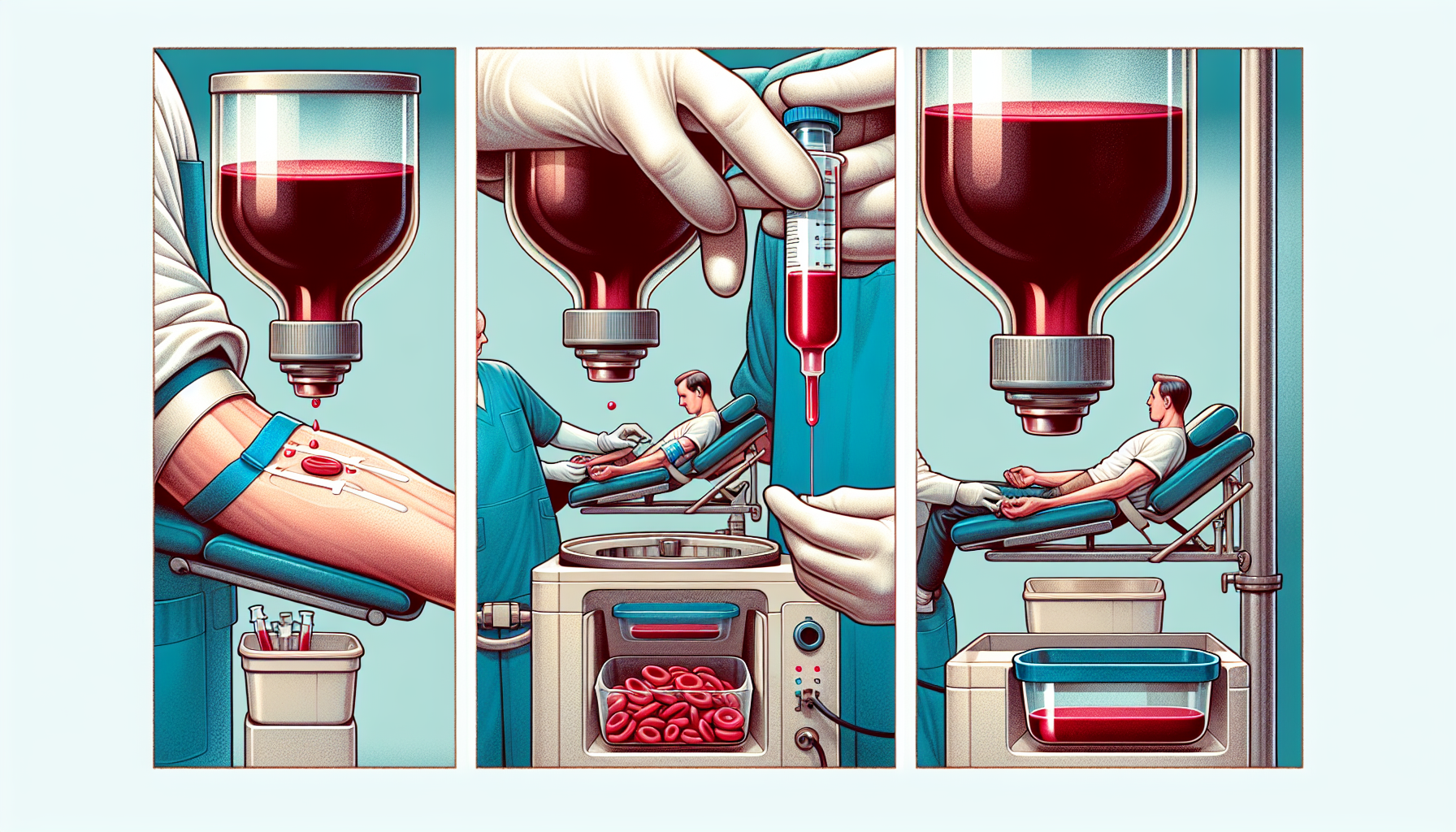
Safety is paramount when considering any medical treatment, and PRP hair loss treatments are no different. The good news is that PRP therapy is generally considered safe, primarily because it uses the patient’s own blood, significantly reducing the risk of adverse reactions. However, like any medical procedure, it does come with potential side effects, albeit mostly mild and temporary.
Understanding these potential effects can help patients make informed decisions and know what to expect during the recovery process. It’s important to distinguish between common, expected side effects and rare complications, as this knowledge can alleviate unnecessary concerns and help patients recognize when to seek medical attention if needed.
Common Side Effects
The most common side effects associated with PRP hair loss treatments are typically mild and short-lived. Patients often experience some degree of swelling and tenderness at the injection sites immediately following the procedure. This is a normal response to the injections and usually subsides within a few days. Redness in the treated areas is also commonly reported, contributing to the temporary appearance of a “sunburned” scalp. These reactions are generally considered positive signs, indicating that the treatment is stimulating the desired response in the scalp.
During the PRP injections, patients may experience minimal pain and pinpoint bleeding. This is normal and expected due to the nature of the procedure. Following the treatment, many individuals report a feeling of tightness or fullness in the scalp, which is often accompanied by mild scalp pain and irritation during the initial healing process. It’s important to note that these sensations are typically well-tolerated and manageable. Most patients find that any discomfort can be easily managed with over-the-counter pain relievers if needed. As the healing progresses, these symptoms gradually diminish, usually resolving completely within a few days to a week after the treatment.
Rare Complications
While PRP hair loss treatments are generally safe, it’s important to be aware of potential rare complications. One of the most uncommon but possible risks is injury to blood vessels or nerves during the injection process. This underscores the importance of receiving treatment from a skilled and experienced practitioner who can minimize such risks through precise injection techniques. Another rare complication is scar formation at the injection sites, though this is extremely uncommon when the procedure is performed correctly.
In the rarest of cases, patients might experience more serious side effects such as blood clots or nerve damage. However, it’s crucial to emphasize that these complications are exceedingly rare, and the overall safety profile of PRP treatments remains very favorable. As with any medical procedure, discussing potential risks with your healthcare provider and following all pre- and post-treatment instructions can significantly reduce the likelihood of complications.
Alternatives to PRP Hair Loss Treatments
While PRP hair loss treatments have become significantly popular due to their efficacy and natural approach, they aren’t the only available option for those battling hair loss. It’s important for individuals to be aware of the full spectrum of treatments to make an informed decision about their hair restoration journey. From innovative non-invasive therapies to more traditional medication options and surgical solutions, the field of hair restoration offers a variety of approaches to suit different needs and preferences.
Additionally, lifestyle changes can play a crucial role in supporting hair health, either as a standalone approach or in conjunction with other treatments. Some options to consider include:
- Non-invasive therapies such as laser therapy, scalp micropigmentation, and low-level light therapy
- Medication options like minoxidil and finasteride
- Surgical solutions such as hair transplant surgery and scalp reduction
- Lifestyle changes like maintaining a healthy diet, managing stress levels, and avoiding harsh hair treatments
By exploring all available options and consulting with a hair restoration specialist, individuals can find the best treatment plan for their unique situation.
Let’s explore some of the alternatives to PRP therapy that individuals might consider in their quest for fuller, healthier hair.
Medication Options
When it comes to treating hair loss, medication options remain a popular and widely accessible choice for many individuals. The FDA has approved two primary medications for the treatment of androgenetic alopecia, commonly known as male or female pattern baldness.
The first is oral finasteride, which is primarily prescribed for men. Finasteride works by inhibiting the conversion of testosterone to dihydrotestosterone (DHT), a hormone linked to hair loss in genetically susceptible individuals. By reducing DHT levels, finasteride can slow down hair loss and even promote new hair growth in some cases.
The second FDA-approved medication is topical minoxidil, which is available over the counter and can be used by both men and women. Minoxidil is applied directly to the scalp and works by increasing blood flow to the hair follicles, potentially stimulating hair growth and slowing down hair loss. It’s particularly effective for various hair loss conditions beyond just androgenetic alopecia.
For those seeking more potent options, dutasteride is sometimes prescribed off-label. Like finasteride, it works by blocking DHT, but it targets both types of the enzyme responsible for converting testosterone to DHT, potentially making it more effective for some individuals. It’s important to note that while these medications can be effective, they often require long-term use to maintain results, and they may come with potential side effects.
Consulting with a healthcare provider is crucial to determine the most suitable medication option based on individual factors such as the type and severity of hair loss, overall health, and personal preferences.
Surgical Solutions
For those seeking more permanent solutions to hair loss, surgical options can provide significant and long-lasting results. Hair transplantation remains one of the most effective surgical interventions for hair restoration.
There are two main techniques used in modern hair transplant surgery: Follicular Unit Transplantation (FUT) and Follicular Unit Extraction (FUE).
- FUT, also known as the “strip method,” involves removing a strip of scalp from a donor area (typically the back of the head) and dissecting it into individual follicular units for transplantation.
- FUE, on the other hand, involves extracting individual follicular units directly from the donor area and transplanting them to the recipient site.
Both methods have their advantages and are chosen based on factors such as the extent of hair loss, donor hair availability, and patient preferences.
While surgical solutions can provide dramatic improvements in hair density and appearance, they require careful consideration due to their invasive nature, recovery time, and potential for scarring.
It’s crucial to consult with a board-certified hair restoration specialist to determine if surgical intervention is appropriate and which technique would yield the best results for your specific case.
Lifestyle Changes
While medical treatments and surgical interventions can be effective in combating hair loss, the importance of lifestyle factors in maintaining healthy hair should not be underestimated.
A balanced diet rich in essential nutrients plays a crucial role in supporting overall hair health. Specific vitamins and minerals, such as iron, zinc, and vitamin D, are particularly important for hair growth and strength. Ensuring adequate intake of these nutrients, either through diet or supplements (under medical supervision), can contribute significantly to healthier, more resilient hair.
In addition to nutrition, other lifestyle factors can impact hair health. Here are some tips to maintain healthy hair:
- Stay well-hydrated to prevent dry, brittle hair that’s prone to breakage.
- Avoid skipping breakfast to ensure a steady supply of nutrients to hair follicles throughout the day.
- Manage stress through techniques like meditation, yoga, or regular exercise, as chronic stress can contribute to hair loss.
By incorporating these lifestyle habits, you can stimulate hair growth and support healthy hair growth.
By adopting these lifestyle changes, individuals can create an environment that’s conducive to healthy hair growth, complementing other hair loss treatments or serving as a preventive measure against future hair thinning.
Finding a Qualified Provider
In the context of PRP hair loss treatments, the provider’s expertise is essential for the procedure’s safety and effectiveness. Finding a qualified professional who has specific experience in administering PRP therapy for hair loss is essential for achieving optimal results. Clinics like Body Balance Medical, which specialize in PRP treatments, can offer the level of expertise needed for successful outcomes.
However, it’s not just about finding a clinic that offers the service; it’s about ensuring that the provider has a proven track record in this specific application of PRP therapy. As you embark on your journey to hair restoration, taking the time to research and select the right provider can make a significant difference in your treatment experience and results.
Summary
As we’ve explored throughout this comprehensive guide, PRP hair loss treatments offer a promising solution for those struggling with thinning hair or hair loss. This innovative therapy harnesses the body’s own healing mechanisms to stimulate hair growth, providing a natural and minimally invasive option for hair restoration.
We’ve delved into the intricacies of how PRP works, who can benefit from it, what to expect during and after treatment, and the potential side effects to consider. We’ve also examined alternative treatments and the importance of finding a qualified provider. While PRP therapy isn’t a one-size-fits-all solution, its versatility and effectiveness make it a valuable option in the arsenal of hair restoration treatments.
As with any medical procedure, it’s crucial to consult with a board-certified dermatologist or hair restoration specialist to determine if PRP is right for you. Remember, the journey to fuller, healthier hair is a process that requires patience, consistency, and often a multi-faceted approach.
Whether you choose PRP or another treatment option, taking that first step towards addressing your hair loss concerns is an empowering decision that can boost both your appearance and your confidence.
Interested in PRP Therapy? Contact Body Balance Medical today!
Frequently Asked Questions
How long does a typical PRP hair loss treatment session take?
A typical PRP hair loss treatment session usually takes about 60 to 90 minutes, including the blood draw, processing, and injection, with the injection process itself lasting around 30 minutes.
How many PRP sessions are needed to see results?
To see optimal results, most patients require a series of 3 to 4 PRP sessions, spaced 4 to 6 weeks apart. Maintenance sessions every 4 to 6 months are often recommended to sustain the effects. The number of sessions needed may vary based on individual factors such as hair loss extent and treatment response.
Is PRP hair loss treatment painful?
PRP hair loss treatment is generally well-tolerated, with most patients experiencing only slight pressure or pinching during the injections. Severe pain is rare, and any discomfort after the procedure can typically be managed with over-the-counter pain relievers.
Can PRP be combined with other hair loss treatments?
Yes, PRP can be effectively combined with other hair loss treatments such as minoxidil or finasteride for better results. It can also complement hair transplant procedures by boosting follicle survival and stimulating growth in surrounding areas.
Are the results of PRP hair loss treatment permanent?
No, the results of PRP hair loss treatment are not permanent. The effects typically last between 1 to 5 years with proper maintenance, and regular maintenance sessions are recommended every 4 to 6 months. Combining PRP with other treatments and adopting a healthy lifestyle can help prolong the effects and maintain optimal hair health.





